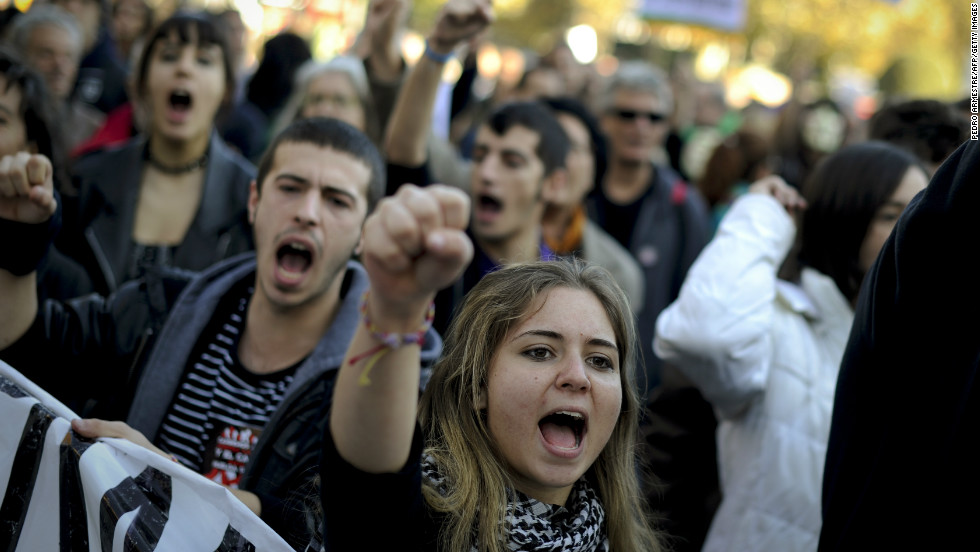Essay on Youth Unrest – ‘Youth unrest’ which is often described as ‘student revolt’, ‘student power’ and ‘student activism’- has become today an established fact, a reality. The last three decades have witnessed innumerable outbursts of student power in many nations of the world.
Youth Unrest — A World Phenomenon:
The phenomenon of ‘youth unrest’ has become worldwide. As Gareth Stedman Jonse has rightly observed: “From Berlin to Peking, from Tokyo to New York, in Paris and in Prague, the rise of these movements (student movements) has altered the nature of politics. Virtually, every government has some reason to fear its students, with good reason.
ADVERTISEMENTS:
From Cuba in 1958 to Czechoslovakia and ‘France in 1968 students have played a crucial role in political change, again and again helping to discredit, transform or topple governments. Students have erupted in the world of politics with a suddenness no one could have foretold”. The students are today a new social force of incalculable significance.
The student power seems to have an anti-establishment and a revolutionary tone. In Germany, the Socialist Student Union (S.D.S.) declared the students’ lack of confidence in political parties and parliament and justified their “taking democracy into the streets”. In Italy, student strikes accompanied by an ‘antiuniversity’ stance marked the happening at Turia and other universities including those of Rome, Naples, Bologna, etc.
In Feb. 1968, the disturbances in the Belgian University of Louviah contributed directly to the fall of the Belgian Government. In Czechoslovakia, in the movement towards liberalism the students and the youth union joined hands with the workers in “heralding the democratic revolution”.
ADVERTISEMENTS:
In America, the anti-Vietnam and civil rights issues brought about confrontation between the students and authorities. The students were led by the S.D.S Students for a Democratic Society. In May-June 1968, France saw battles between demonstrators and police and violent attack of students and workers.
Students boycotted examinations in Sorbonne and occupied the buildings. When the crisis was over, the Minister of Education was no longer in the Government for he had to resign. It is said that this event accelerated the downfall of De Gaulle. In England, the London School of Economics was the scene of confrontation between the radicals and the authorities.
In Indonesia, the partnership of the students and the army militated against Communism and brought about the fall of the Soekarno regime. Japan has witnessed the most massive demonstrations by students. In Bangladesh, the students played a key role in its liberation movement joining hands with the Mukti Bahini.
Youth Unrest in India:
ADVERTISEMENTS:
In India the student activism has erupted in different forms and for totally unconnected reasons in different parts of the country. A quarrel between the staff of the bus transport and a group of students in Jabalpur led to massive demonstrations and strikes in the whole of M.P. and U.P. some time ago. A change in the method of payment of examination fees resulted in total strike in Lucknow University.
A demand for a steel plant brought the Andhra students on the street. Vietnam has always provided an early opportunity to the Calcutta students to agitate. Demand for an Agricultural University gave rise to a massive agitation in the Vidarbha regions of Maharashtra.
A demand for reforms in the Agricultural University was the reason behind agitation in Jammu and Kashmir. A few rusticated student leaders aided by the ‘disgruntled politicians’ brought the closure of the Banaras Hindu University.
A rivalry between student factions, one supporting the Vice-Chancellor and the other, Chief Minister of Andhra Pradesh in the Osmania University was said to be the real beginning of the Telengana agitation. Anti-Hindi agitation and the Expo – 70 agitations resulted in the closure of all the Colleges in Karnataka. Semester system was the target 5f attack for the students of the Mysore University some years back.
The ‘Nav Nirman Andolan’ of Gujarat (which toppled down Chimanbhai Patel’s Government) ultimately gave birth to the Chhatra Sangharsha Samities guided, inspired and led by Late Sri Jayaprakash Narayan and the Assam agitation spearheaded by the All Assam Students Union (being supported by the Gana Sangrama Parishad) have been the recent examples of student agitation of semi-political nature. Barring a few successful agitations the student solidarity has failed to be peaceful in its agitations.
